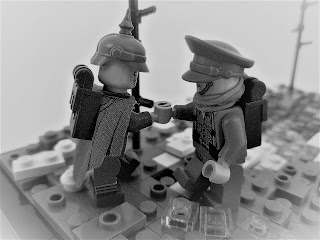March 10, 1915
Now that the stagnant fighting of trench warfare had gripped the western front, the only goal the allies had was to break the deadlock. In the opening months of 1915, the allied leadership launched multiple offensives, trying to break through the German lines to win a quick victory, still somehow believing that a possibility. However, soon after any breakthrough the allies achieved, the Germans would immediately launch a fierce counterattack to take back their position. This was a constant for almost every allied offensive attempted.
One assault in particular that followed this pattern was the British attack at Neuve Chappelle, where the objective was to take a tactically significant ridge occupied by the Germans. The attack was led by General Douglas Haig, a highly successful leader who was promoted after exceptional performance as a corps commander during the First Battle of Ypres.
The assault at Neuve Chappelle was well planned and initially well executed. The British, for the first time in history, used aerial photography to effectively map out the German defenses, which were found to be poorly manned and constructed. Haig's men, with their equipment, were moved under cover of darkness, so as not to alert the German sentries. Everything was in place.
The attack began at 7:30 AM, on March 10th, with a massive artillery bombardment. The Germans were taken completely by surprise. They were overrun with extreme ease. In fact, in some places, the attackers barely took any losses taking the German front lines. It seemed everything was going perfectly. Haig envisioned his forces breaking through the rest of the German defenses and flooding into open country. The battle was his! However, there was one small problem.
Communication between Haig and his men had been cut off. Any order he gave took hours to reach them, likewise, any report of the events on the battlefield took just as long to reach him. Not only that, but some of the surviving Germans set up a small number of machine guns at one of the British flanks, inflicting heavy casualties, and causing mass confusion and panic. Additionally, many units lost their way in the difficult terrain of the war-torn battlefield.
The time they lost milling around in confused masses was time the Germans spent moving their reserves in to strengthen their lines, blocking the British from their goal of reaching open countryside. The Germans then mounted a fierce counter attack. The fighting continued until March 13, when the fighting once again bogged down and both sides went back to hiding in their trenches. It was a disaster. The British had lost around 11,700 men, and they had only advanced a total of one square-mile.
This tragic loss of life was a constant during the allied spring offensives of 1915. Despite all of this, the British and French forces were unable to break through the German defenses in any significant way. The entire western front was still gripped with a savage and inescapable stalemate.
.jpg)










.jpg)
